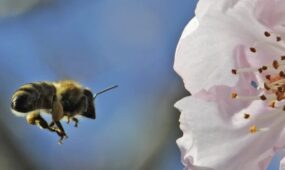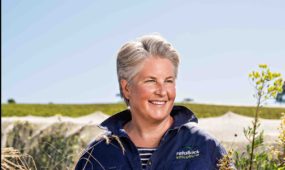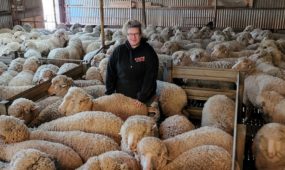Grape marc proves a superfood for abalone
Primary Industries
WASTE from the wine industry is being developed into aquaculture feed with highly promising results.

Sign up to receive notifications about new stories in this category.
Thank you for subscribing to story notifications.
The South Australian Research and Development Institute (SARDI) has partnered with Barossa Valley company Tarac Technologies to work on the project. The research has so far produced a cheaper, better performing food source made from grape marc for the farmed abalone industry.
Tarac produces about 130,000 tonnes of steam distilled grape marc a year from the heat-treated skins, pulp, seeds, and stems of grapes left over after wine is made.
It is a world leader in turning grape marc, once known as a waste product, into value added products ranging from grape spirit to stock feed, grape seed extract, grape seed oil and soil improvers.
A six-month trial of a test feed produced by Aquafeeds Australia containing 20 per cent of Tarac’s steam distilled grape marc, registered as Acti-Meal, is set to begin at an abalone farm in November after successful lab trials in Adelaide last year.
During the three-month lab trial, greenlip abalone fed on an experimental formulated diet containing 5-20 per cent Acti-Meal outperformed the other abalone in Food Conversion Ratio, which is the amount of food given compared with the amount of weight gained.
The abalone on the grape marc diet showed a 6 per cent improvement in biomass gain and a 2.9 per cent increase in shell growth rate, and had a 100 per cent survival rate.
Tarac Technologies CEO Jeremy Blanks said the Acti-Meal product was originally developed for agriculture as a feed source for cattle, sheep and pigs.
He said it was the first time he was aware of that wine industry bi-products had been used in aquaculture feed.
“It was really through the discussions we had with SARDI and picking up on some of the early research they were doing that we identified aquaculture as a potential opportunity,” Blanks said.
“Finding ways to value add that bi-product and apply it into areas such as agriculture and aquaculture is something we’ve been looking at for a long time and this is starting to show some early positive signs.”
“Our byline is all about reuse, recycling, reformulating and revaluing – it’s all about trying to find better and more sustainable ways to reuse products out of the wine industry.”
Blanks said while Australian abalone were prized in Asia, the size of the industry on a global scale was relatively small.
However he said the feed could potentially be exported and adapted for other aquaculture products such as fish.
“The opportunity in terms of volume is undoubtedly into export, particularly into Asia and the work we’ve done with SARDI suggests that if it is successful with abalone then that is a good indicator for its potential for some of the fin fish
SARDI Nutrition and Feed Technology Associate Professor David Stone, pictured above, said cereals such as wheat, lupins and soy were traditionally used as a carbohydrate and energy source in commercial abalone feed. He said the lab trial showed that Acti-Meal had the potential to replace some of those ingredients.
“The other bonus here is that we are removing something that costs $500-$800 a tonne and replacing it with what is effectively a waste product that costs $250-$400 a tonne – it’s a price reduction with a growth benefit,” he said.
Jump to next article



